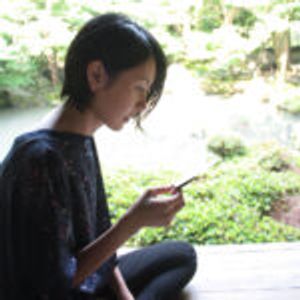Saiko Otake has a wide array of styles, using painting, photography, and collage, and her rich use of colors and dramatic compositions are alluring. Since her first solo art show in 2018, she’s been having exhibitions at places like PARCO MUSEUM and NADiff a/p/a/r/t every year. She’s been improving her abilities and building her career, and her first European solo show, COLOURIDER, is currently on display at Sato Gallery in Rotterdam. This marks her first exhibition held in a gallery in Europe. Otake’s art, where feminine power, psychedelic aesthetics, and modern art clash vibrantly, carries a nostalgic vibe and a contemporary form. In time for the exhibition, Otake is on a trip around Europe, visiting places like Rotterdam, London, and Paris to her heart’s desire. We asked her about the origins of her artmaking, where she gets inspiration from, and what her focus is on now while she’s on her trip.
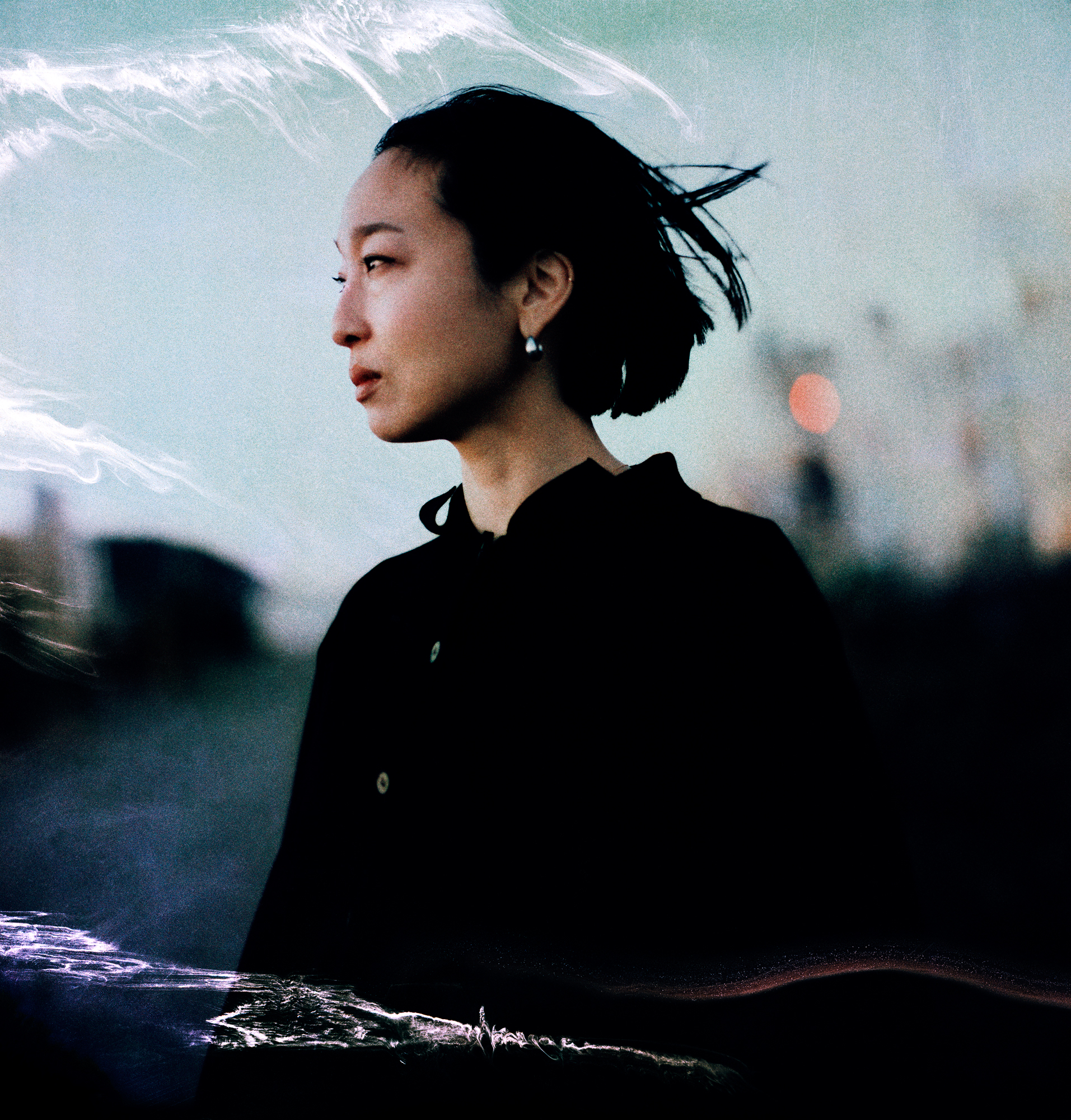
Saiko Otabe was born in 1988. She graduated from the University of the Arts London in 2016. Using various mediums, such as drawing, painting, photography, and collage, she expresses her unique artistic universe from her multifaceted perspective. Notable exhibitions include EXUVIA (London, 2016)/(Singapore, 2016), VISUAL SAMPLING (Taichung, 2018), COSMOS DISCO (Tokyo, 2019), GALAGALA (Tokyo, 2020), and GALAGALAGALA (Osaka, 2021).
Website: saikootake.com
Photography Yusaku Aoki
How did Saiko Otabe cultivate her distinct flair and compositions in her artworks?
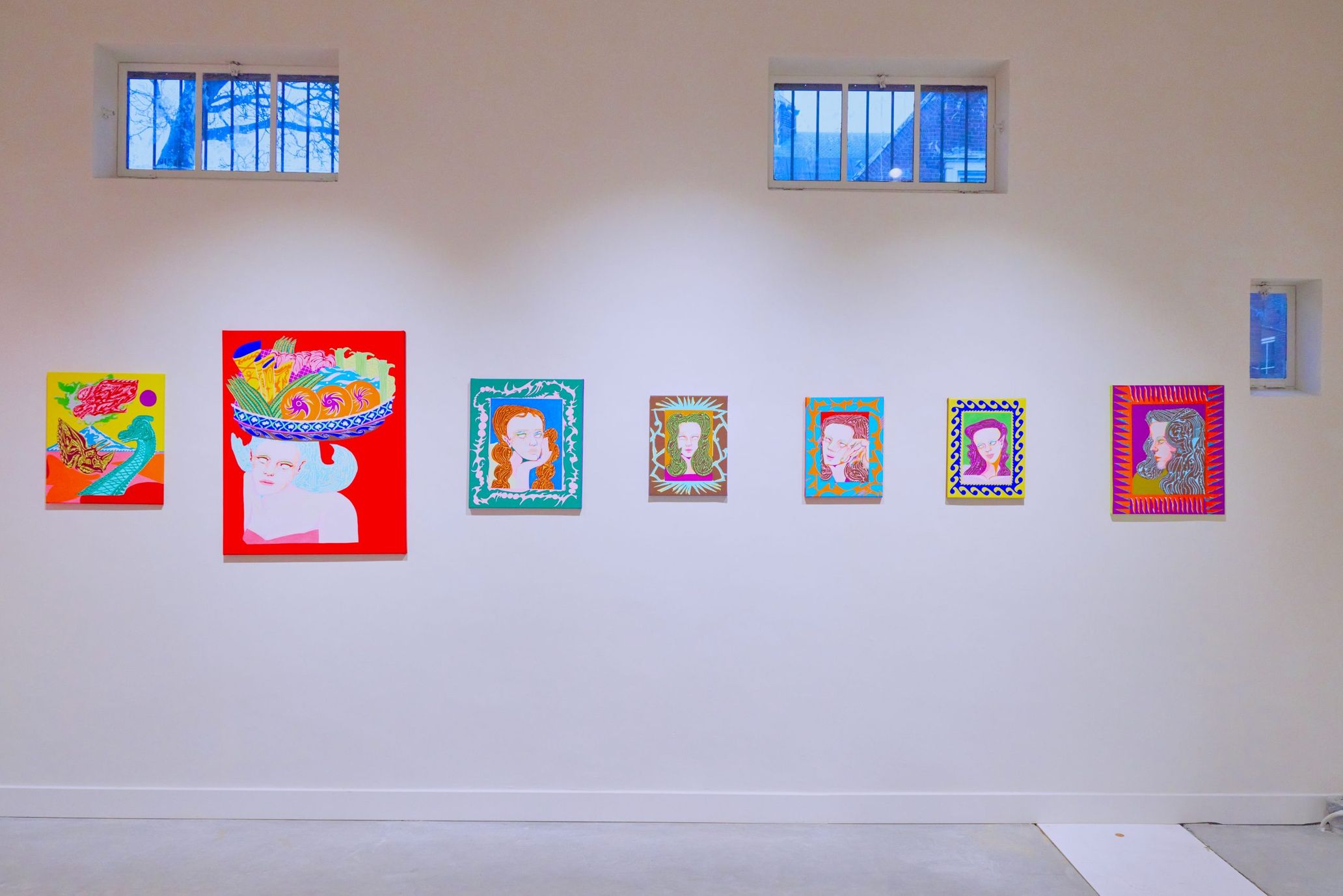
—Congratulations on your first solo exhibition in Europe. How did it come about?
Saiko Otake: I met the owner of Sato Gallery, Julien, when I was visiting Paris in 2019 for work, and we were able to make this exhibition happen after covid. I was in my head because it was my first art show in Europe, but he told me, “Have fun with it!” That made me want to show an evolved version of what I had been making in Japan. One of my dreams, to have an exhibition abroad, has come true.
—Your works are characterized by their powerful, rich colors, including pieces in COLOURIDER. What role does color play?
Otake: I discovered 60s psychedelic art as a child and was drawn to distinct color schemes using fluorescent colors, typography, and the impact of color. Since then, I’ve truly understood the power that colors have. It’s not that I like colors just because they’re loud; I like strange color schemes or the power and strong impression that colors emit when combined. There are infinite ways to combine and show colors, so I want to express how amazing they are all the time.
—The title, COLOURIDER, fits your exhibition so perfectly. Your compositions and arrangements are unique and exquisite.
Otake: When I was younger, I wanted to become someone who makes posters. Perhaps I think of my art as compositions that combine patterns and colors rather than paintings due to my admiration for posters. I like looking at old posters and advertisements, so I’m sure they influence my work. Other than drawing women, I drew things that don’t exist, like dinosaurs and monsters.
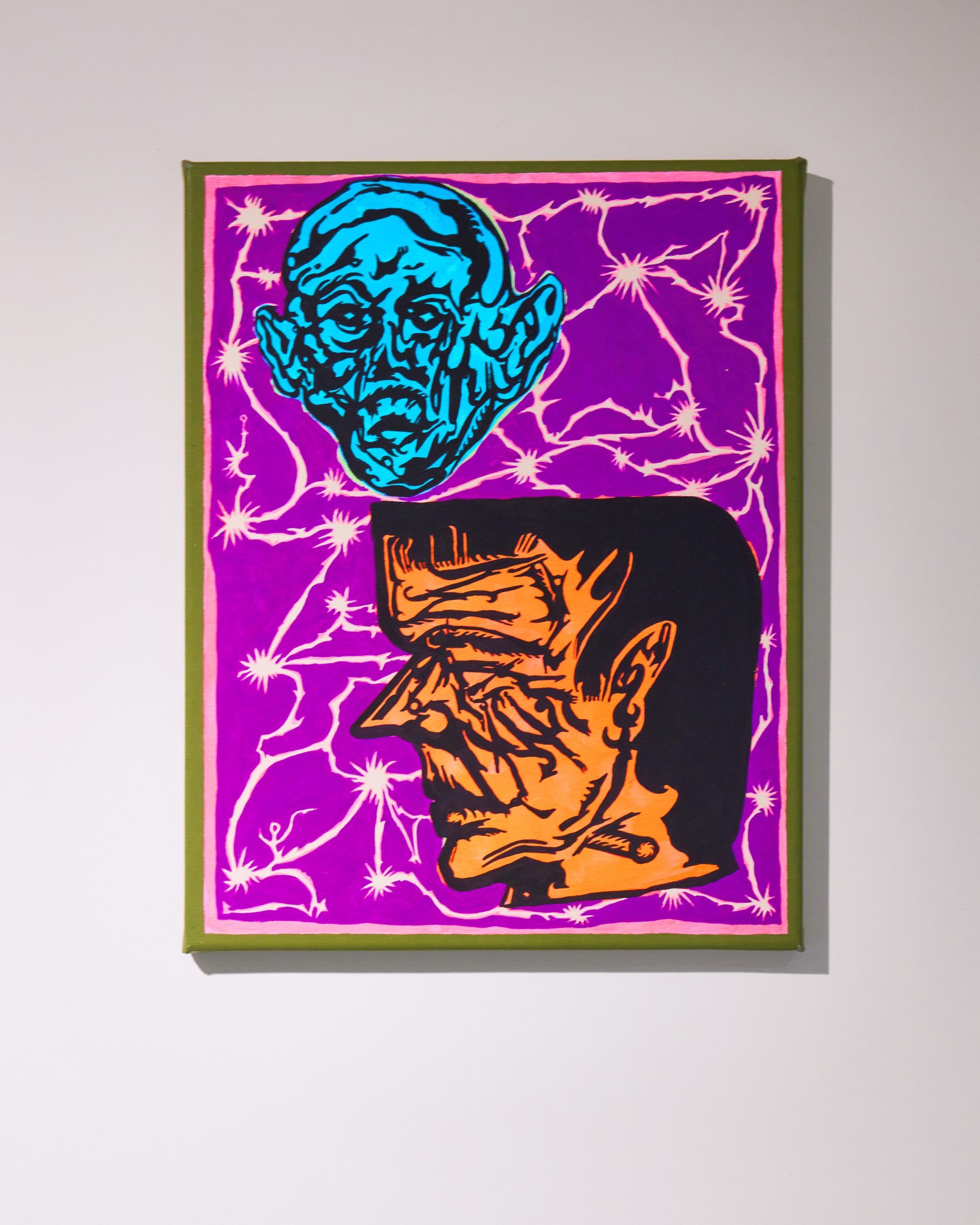
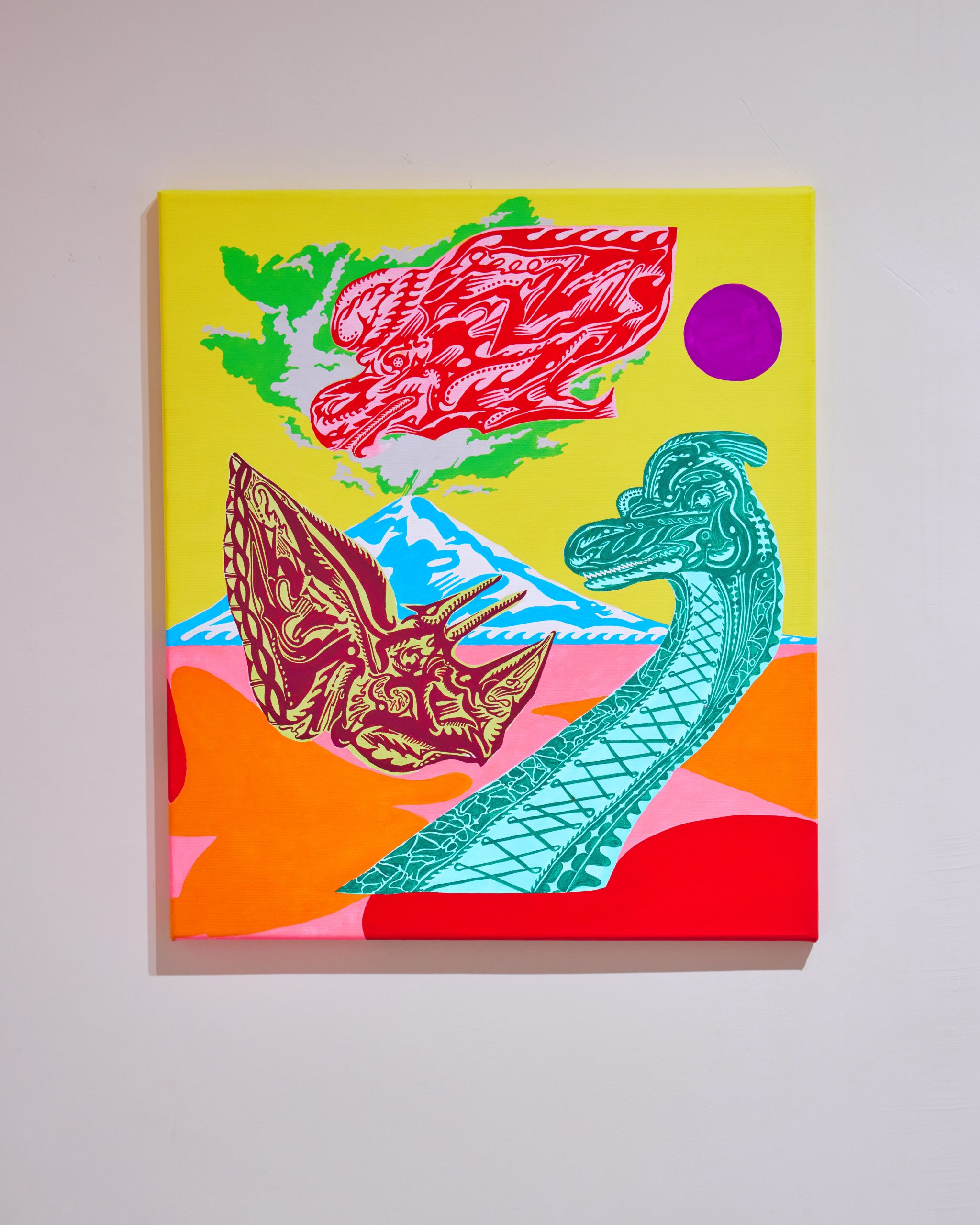
This might be the influence of psychedelic posters. I also have some pieces where I intensely filled in the blank spaces with something like words that connected to each other.
Blurring the line by combining photos/A book series that accumulates everyday inspiration
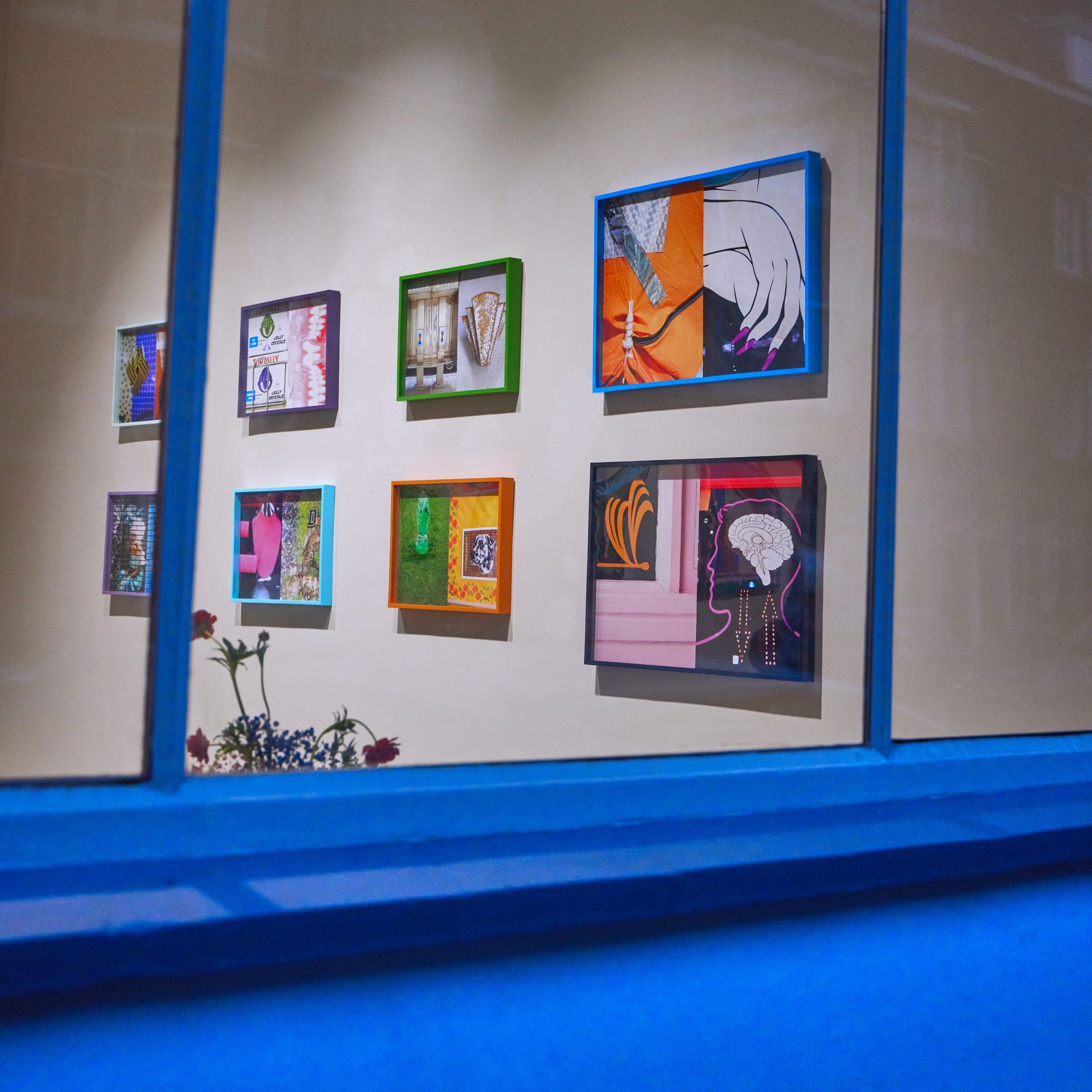
—Aside from paintings, you’re also showing artworks that combine two photos together. You create a different image by putting photos that look seemingly unrelated to one another side by side. How did you come up with this?
Otake: I joined a workshop on Daido Moriyama’s exhibition at Tate Modern when I was in London. Monochromatic photos were on the wall, and we had to choose a number and create our own layout. That workshop inspired me to put together photos I took on my own. The catalyst for [this method] was placing photos that looked seemingly unrelated to one another side by side. It was fun. The boundaries between time, place, and colors are made ambiguous by combining two completely different photos, so I was especially mindful of the balance of the colors and shape of the layouts. For this exhibition, the theme is overseas and Japan; the photos I took abroad are on the left, and those I took in Japan are on the right.
—Is that how your book series was born?
Otake: Yes. I had always wanted to make a book with no blank spaces, so I made three as part of my graduation project at Central Saint Martins. I self-published 15 books by 2022. I took photos as though I were collecting sceneries that inspired me daily.
—What sort of sceneries in your daily life do you get inspiration from?
Otake: I’m interested in old things that have been left behind and things that humans altered. I’m drawn to parts of posters, peeling walls, old mannequins, and more. In terms of places, I like museums, old stationery stores, vintage shops, and markets selling many different items. Bathrooms, signs, and trash on the ground are must-sees when I’m overseas. They have unique colors that you don’t see in Japan.
・Impressions of visiting the Netherlands for the first time and traveling around Europe

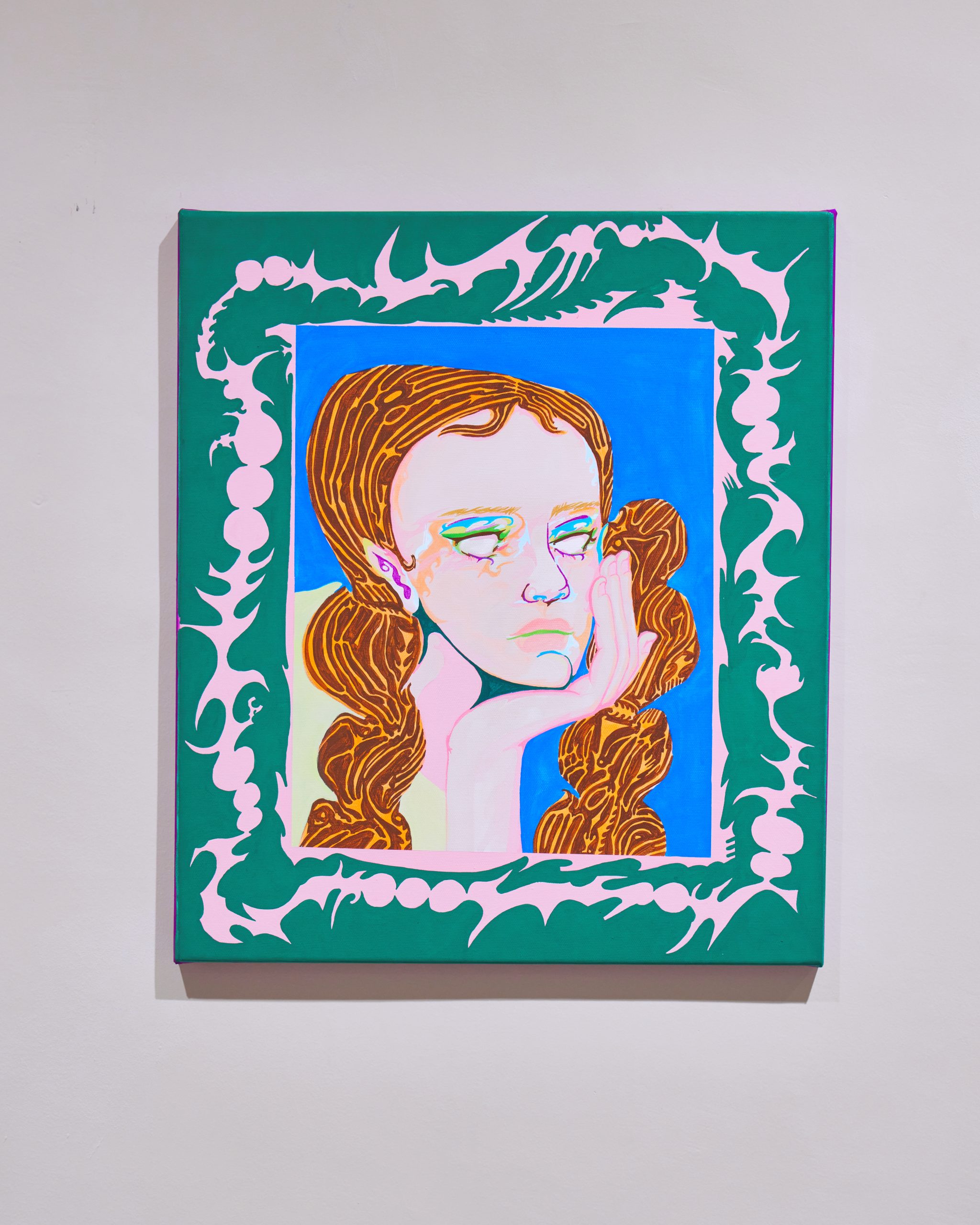
—I see. I’d like to hear about your travels. This is your first time visiting the Netherlands; what are your impressions?
Otake: What surprised me were the big windows where you can see everything inside the houses. I heard that in the past, it signaled living a modest life under the influence of Protestantism, which preferred simplicity and frugality. But today, it’s shifting to a custom where people show off. That was interesting. When I walk on the streets, I feel like I’m watching one scene from a film because I see glimpses of people’s lives, like a family sitting at the dinner table. I talked to long-time residents of the Netherlands, which made me appreciate the place even more. It’s relatively easy to get a visa, and the support for artists is generous. Traveling around, I get the impression that the people are kind here.
—Your trip started in London. You’re now done with traveling around the Netherlands, and you’re visiting Paris after this. What do your travels look like?
Otake: I got so pumped when I first saw (Ronald Brooks) Kitaj’s exhibition in London, and the cityscape, smell, and look of pubs all felt so nostalgic. I was nervous because it took a long time for my pieces to arrive in Rotterdam. I also went to the Hague and Amsterdam to visit people I know. I feel happy every day because I can absorb things I find stimulating for the first time in a long time.
I want to visit the Japan Museum Sieboldhuis in Leiden after this. Writer Akira Yoshimura-san’s books are interesting, so I’m interested in Sieboldhuis and the people he was affiliated with. I’m going to Philippe Weisbecker’s exhibition in Paris and Gilles Aillaud’s exhibition at the Centre Pompidou. I’m also going all the way to Lyon to visit the Ideal Palace. It’s a castle built by a mail carrier named (Ferdinand) Cheval and is categorized as outsider art. I’ve been interested in it since I was small, so I’m very excited.
—I’m surprised by the breadth of your interests, which span modern art, outsider art, and even history.
Otake: I’m looking forward to seeing actual paintings by Van Gogh, Picasso, Matisse, and so on, but I want to cross the line of art that has already been assigned value and appreciate various things with curiosity.
—How has the path to becoming an artist been?
Otake: I’ve enjoyed looking at many different things since I was small. I used to draw people in my sketchbook and look through magazines to draw. But I didn’t think of becoming an artist, nor did I believe I could make a living as one, so I simply hoped I could support my father (who’s an artist). I eventually started wanting to draw and express things myself; I am where I am today because I was given many opportunities.
—How do you feel now that you’re having your first solo exhibition in Europe?
Otake: I’m relieved it opened safe and sound; I’m satisfied with my first solo exhibition outside Japan. It’d be more interesting to show bigger pieces with colors next time. It’s open until March 3rd, so I’m both apprehensive and eager about the feedback I’ll receive. It was hard because I’d feel down due to the terrible state of the entire world, but that’s why I wanted to convey the power that colors possess through this exhibition. I myself feel encouraged when I see colors.
■SAIKO OTAKE COLOURIDER
Date: January 25th, 2024 (Thursday) to March 3rd (Sunday)
Venue: Sato Gallery
Address: Insulindestraat 78, 3038 JB Rotterdam, Netherlands
Entrance fee: free
Website: https://www.sato.art/ja/exhibitions/23/overview/
Translation Lena Grace Suda

